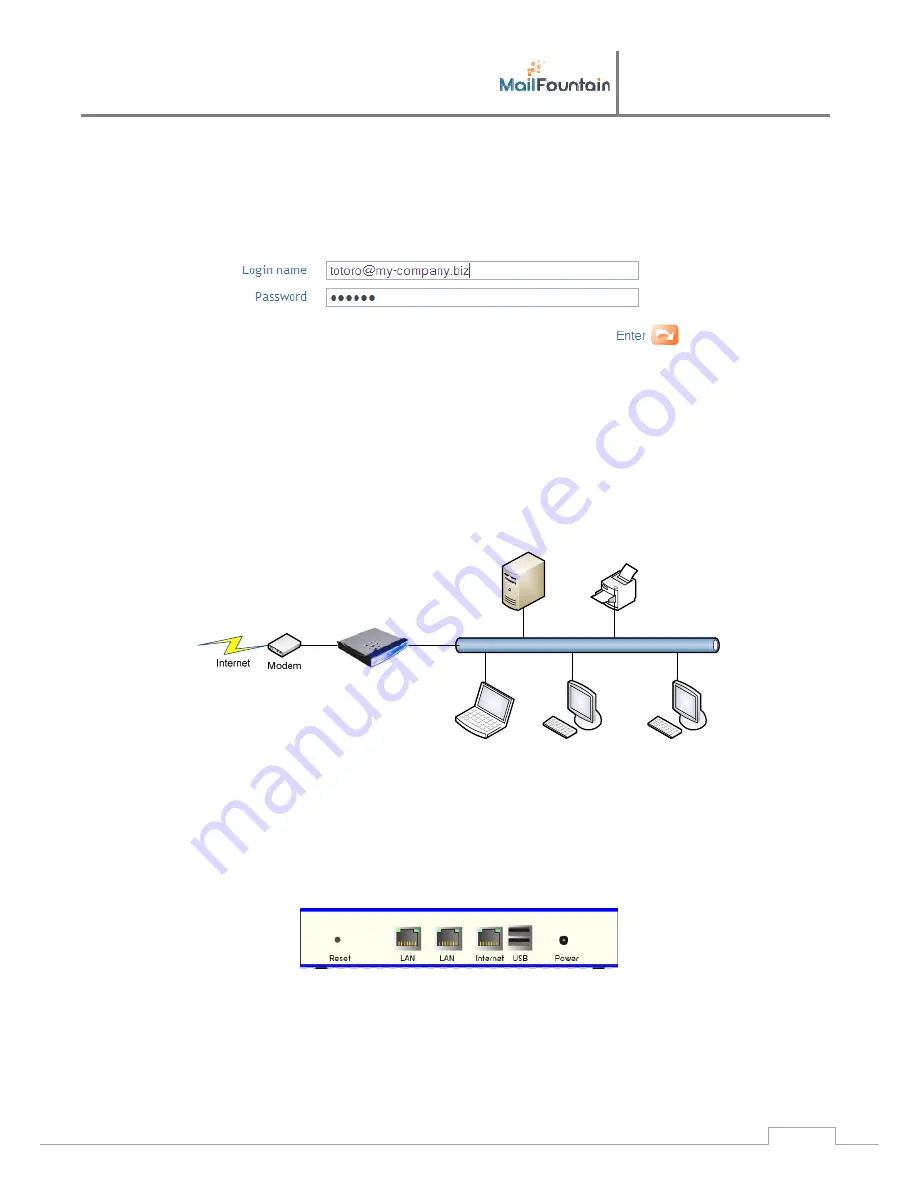
User
manual
S100, S200, M500
15
•
Send
and
view
their
e
‐
through
the
integrated
WebMail
•
Manage
their
account
settings
•
Manage
e
‐
mailings
on
which
he
has
rights
•
Managing
directories
To
connect
as
a
domain
user,
you
must
use
your
complete
e
‐
as
login
name,
and
enter
your
password.
6.2
Integrate MailFountain into your network
This
step
is
essential.
MailFountain
needs
to
interact
with
both
the
Internet
and
your
LAN.
To
simplify
this
configuration
MailFountain
act
by
default
as
a
router
/
firewall
and
can
simply
be
placed
into
a
head
of
your
local
network.
This
is
convenient
if
you
haven’t
knowledge
of
network
setting.
But
this
configuration
is
not
imposed
at
all,
and
if
you
have
the
necessary
skills
(internal
or
external),
you
can
totally
set
MailFountain
to
fit
like
any
other
server
in
your
network.
6.2.1
MailFountain in router mode (default mode)
Figure 3 : MailFountain in router mode
In
this
mode,
you
have
to
not
worry
about
almost
anything.
Just
make
sure
that
MailFountain
access
to
Internet
(see
Section
6.2.1.2:
Setting
network)
and
define
the
simplified
characteristics
of
your
LAN.
6.2.1.1
The Ethernet plugs
In
this
mode,
the
Ethernet
plug
located
to
the
right
near
the
USB
port
is
considered
taking
the
Internet
(or
WAN).
On
this
one
it
should
connect
the
modem
The
other
two
Ethernet
plugs
called
LAN
correspond
to
your
LAN.
So
you
can
connect
on
it
your
computers,
printers,
etc.
Of
course
you
can
also
connect
a
network
switch
in
order
to
install
more
equipment
(the
maximum
is
253
units).
6.2.1.2
Network settings
As
Administrator,
open
the
Network
configuration
page:










































